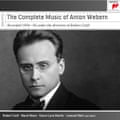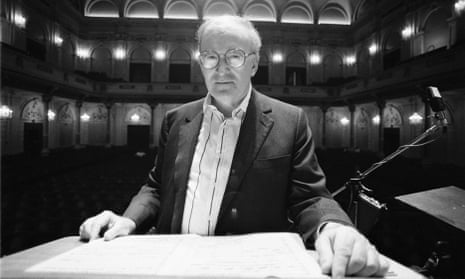In the decades after the second world war it was the music of Anton Webern, rather than that of his teacher Arnold Schoenberg, that provided the starting point for the revolution launched by the composers of the European avant garde. Yet despite its influence, Webern’s slender output was rarely performed then, and even more rarely recorded. It did not become more widely accessible until the American conductor Robert Craft directed this series of recordings, made in Los Angeles between 1954 and 1956, using an unidentified orchestra made up, presumably, of Hollywood session musicians, and west coast-based soloists, including the soprano Marni Nixon and pianist Leonard Stein.

Craft now is best remembered as Igor Stravinsky’s assistant, author of the books of their conversations and credited with encouraging the composer to adopt serial techniques in his later years. But his Webern recordings proved hugely influential; for those of us growing up in the 1960s and 70s, Craft’s LPs provided almost the only way of getting to know these jewel-like works, until in 1979 Pierre Boulez released the first of what would be his two complete surveys.
Craft launched a second series of Webern recordings in 2009 for Naxos, left unfinished at his death, while until this reissue his pioneering efforts from more than half a century earlier had never been transferred to CD. The set includes all the works with opus numbers, as well as Webern’s iridescent orchestration of the Ricercar from Bach’s Musical Offering and just one of the early, pre-opus pieces, the Piano Quintet of 1907 – just under three hours’ music altogether. (The second of Boulez’s surveys, released in 2000 and running to six discs, includes much more of the “prehistoric” music, though by no means all of it.)
There’s no doubt that Webern interpretation has moved on since Craft made these discs, not only thanks to Boulez’s work, but through recordings by other conductors (especially Karajan, Sinopoli and Dohnányi) too. The cool, rigorous beauty and impacted lyricism they reveal in this music can only be sensed occasionally in these performances. It’s all too obvious that this music was terra incognita to these musicians; there’s a dogged caution and lack of expression in much of the playing and singing, not helped by the dryness of the recording. But in the orchestral works Craft shows that he at least understands what the essence of Webern’s music is; in the Passacaglia Op 1, the two sets of orchestral pieces, Op 6 and Op 10, and the Variations Op 30, the raw-edged fierceness and cut-glass precision seem authentic. But it’s more an issue of historical than of musical significance; the limitations in the performances of the smaller-scale works make this a set for specialists. Those looking for a Webern survey for their collection should opt for one of the Boulez sets.

Comments (…)
Sign in or create your Guardian account to join the discussion